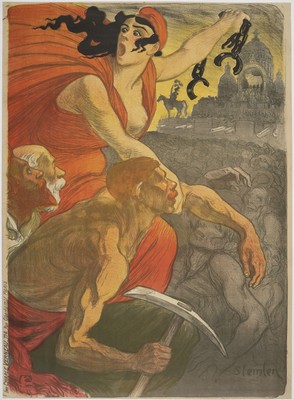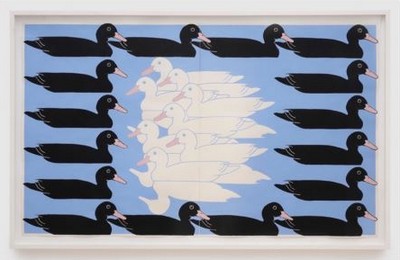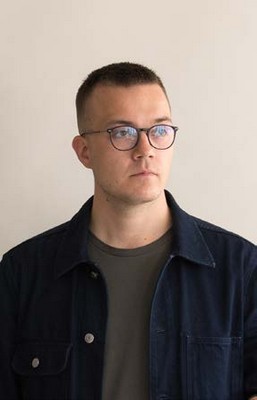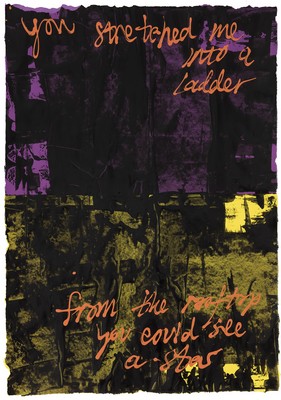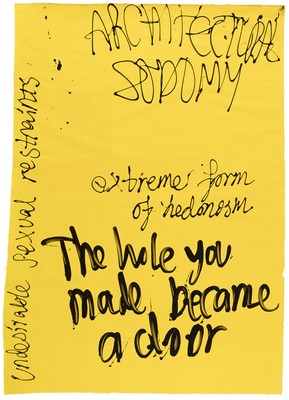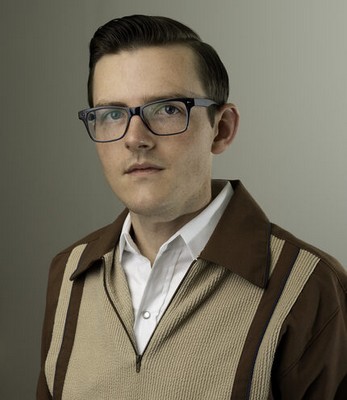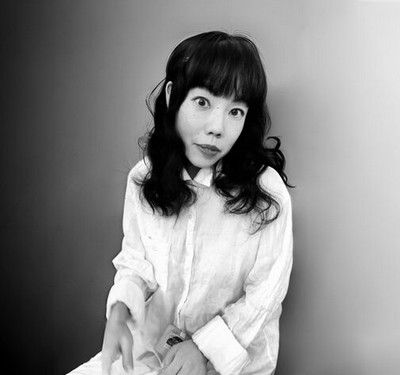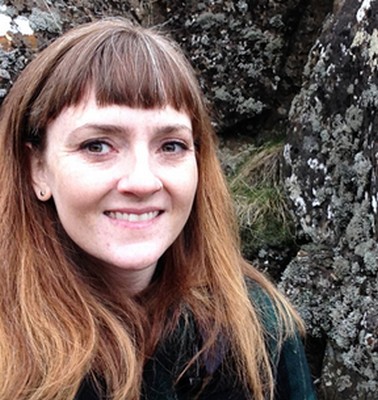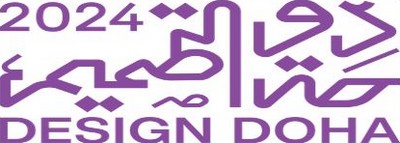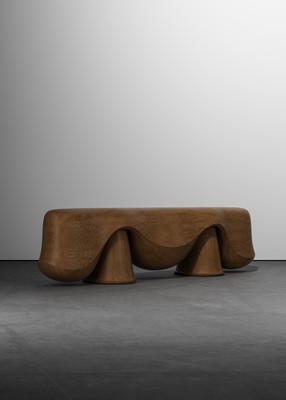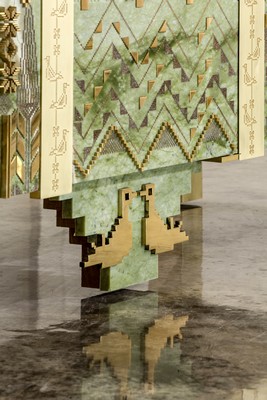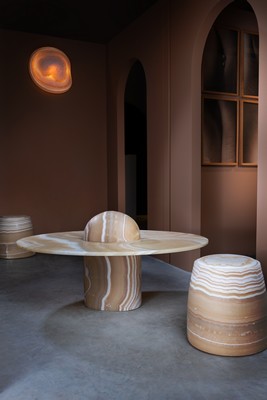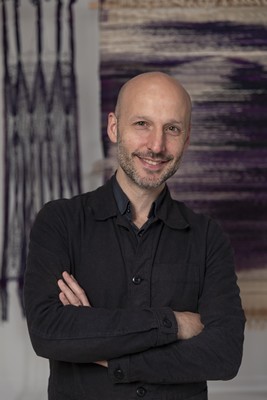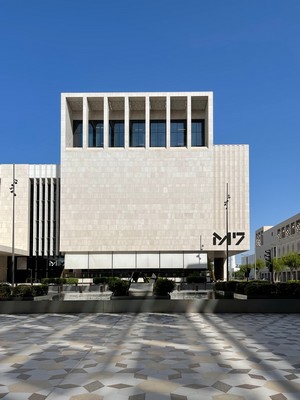Arts/Industry Announces 2024 Artists-in-Residence
12 Artists Selected for Arts/Industry’s 50th Anniversary Year
The John Michael Kohler Arts Center has announced the 12 artists participating in its prestigious Arts/Industry residency program during 2024. They include Sharif Bey, Shae Bishop, Justin Favela, Cathy Hsiao, Sahar Khoury, Mary Anne Kluth, Lauren Mabry, Harold Mendez, Martha Poggioli, Lee Emma Running, Edra Soto, and Ger Xiong/Ntxawg Xyooj.
The Arts/Industry artists-in-residence will each spend three months creating new work in studios located in the pottery or foundry at the Kohler Co. factory in Kohler, Wis.
Arts/Industry marks its 50th anniversary in 2024, and the John Michael Kohler Arts Center is dedicating the year to celebrating the program’s achievements.
“Throughout the year, exhibitions at JMKAC will reflect the history of Arts/Industry, current residents’ work, alumni highlights, and the invaluable contributions of industry professionals,” said Program Director Siara Berry. “We are excited to share the various ways that art and industry coexist; not only within the Kohler factory and residency, but within our everyday lives.”
THE ARTISTS
Photo courtesy of the artist
Sharif Bey lives and works in Syracuse, New York, where in addition to his studio practice, he is an associate professor in arts education and teaching and leadership in the College of Visual and Performing Arts and Syracuse University’s School of Education. Bey earned his BFA in ceramics from Slippery Rock University of Pennsylvania, an MFA in studio art from the University of North Carolina, and a PhD in art education from Penn State University.
Sharif Bey’s work is included in the collections of Carnegie Museum of Art, Pittsburgh, Pennsylvania; Smithsonian American Art Museum and Renwick Gallery, Washington DC; and Columbus Museum of Art, Ohio, among others.
Photo: Loam
Shae Bishop was born in Tennessee, but grew up in Louisville, Kentucky. There, he spent his childhood half at his desk and half in the woods, cultivating his two main passions: art and reptiles.
Shae Bishop attended the Kansas City Art Institute, earning a BFA in ceramics and art history. After completing a two-year residency at Red Star Studios in Kansas City, he moved to the Blue Ridge Mountains of North Carolina, assisting with classes at the Penland School of Crafts. He has completed residencies at the Archie Bray Foundation in Montana, San Diego State University, and California College of the Arts. Shae Bishop divides his time between Richmond, Virginia, and North Carolina, where he is a founding member of Treats Studios in Spruce Pine.
Photo: Mikayla Whitmore
Based in Las Vegas, Justin Favela is known for large-scale installations and sculptures that manifest his interactions with American pop culture and the Latinx experience. He has exhibited his work internationally and across the United States.
His installations have been commissioned by museums including the Denver Art Museum, Colorado; Crystal Bridges Museum of American Art, Arkansas; and El Museo del Barrio, New York. He is the recipient of the 2021 Joan Mitchell Foundation Fellowship. He holds a BFA in fine art from the University of Nevada, Las Vegas.
Photo courtesy of the artist
Cathy Hsiao is a Chicago-based artist and educator who grew up between the US, Taiwan, and Hong Kong. She holds an MFA from the School of the Art Institute of Chicago and a BA in history and art history from the University of California, Berkeley.
Cathy Hsiao is a 2019 Newcity Magazine Breakout Artist, a 2020 Graham Foundation Artist Grantee, a 2022 Hopper Prize winner, and a 2022 Fountainhead Artist-in-Residence in Climate and Environmental Sustainability. Her work has been exhibited at Chicago Artists Coalition and at Carrie Secrist Gallery and DePaul Art Museum in Chicago.
Photo courtesy of the artist
Sahar Khoury is an artist and educator based in Oakland, California. She received her BA in anthropology from UC Santa Cruz. She earned an MFA from University of California, Berkeley, and teaches in the Department of Art Practice. She was the recipient of the San Francisco Museum of Modern Art 2019 biannual SECA Art Award. Her work was shown in the 2018 triennial exhibition Bay Area Now 8 at the Yerba Buena Center for the Arts and has been exhibited at the Wexner, San Francisco Museum of Modern Art, Yerba Buena Center for the Arts, Oakland Museum of California, The Wattis Institute, and UC Berkeley Art Museum, among others. Khoury’s work has been written about in The New Yorker, Art Review, BOMB Magazine, and Hyperallergic.
Photo courtesy of the artist
Mary Anne Kluth studied at University of California, Berkeley, as an undergraduate, and received a BFA from California College of the Arts and an MFA from San Francisco Art Institute.
Mary Anne Kluth’s work has been shown at the Contemporary Jewish Museum, the Oakland Museum of California, the Santa Cruz Museum of Art and History, and the Las Vegas Contemporary Art Center. Her artwork has been featured in such publications as Artweek, ARTnews, and Harper’s. Her critical writing has appeared in Art Ltd., KQED, Stretcher, and Art Practical.
Photo: Ryan Collerd
Lauren Mabry is recognized internationally for her bold, dynamic glazes, and inventive use of material, color, and form. Her ceramic vessels, objects, and dimensional paintings embrace experimentation in questioning the boundary between abstract painting, minimalist sculpture, and process art.
Lauren Mabry has received grants from the Pew Center for Arts & Heritage, the Independence Foundation, and the National Council on Education in the Ceramic Arts Emerging Artist Award. She has worked at the Jingdezhen International Studio in China and the Gaya Ceramic Art Center in Bali, Indonesia. Mabry has shown work at the Bemis Center for Contemporary Art, Nebraska; Fuller Craft Museum, Massachusetts; and Milwaukee Art Museum. Her work is included in the collections of the Nelson-Atkins Museum of Art and the Museum of Contemporary Art in Missouri, among others.
Lauren Mabry received her BFA from Kansas City Art Institute and her MFA from University of Nebraska-Lincoln. She is represented by Pentimenti and by Ferrin Contemporary.
Photo courtesy of Patron Gallery,
Institute of Contemporary Art, Miami.
A first-generation American, born in Chicago to Colombian and Mexican parents, Harold Mendez works with installation, photography, sculpture, and text to reference reconstructions of place and identity. His work addresses the relationships between transnational citizenship, memory, and possibility, considering how history is not only an affirmed past but a potential future. His recent work examines how reclaimed objects, makeshift monuments, and images reveal a life parallel to conflict, demonstrating both factual evidence and where traces of fiction emerge.
Selected exhibitions of Harold Mendez’s work include the 2017 Whitney Biennial, Whitney Museum of American Art; the Museum of Contemporary Art, Chicago; Renaissance Society; Museum of Modern Art / PS1, New York; Studio Museum, Harlem; Drawing Center, New York; and Museum of Contemporary Photography, Chicago. Reviews of his work have appeared in The New York Times, Artforum, and Frieze.
Photo courtesy of the artist
Martha Poggioli, born in Brisbane, Australia, is a Colorado-based interdisciplinary artist, educator, designer, and researcher. Her work explores systems of production and cultures of consumption to consider how communities and bodies contend with the material world. Her practice involves industrial engagement and minimally invasive surgical device technology.
Martha Poggioli has received numerous awards including the LeRoy Neiman Foundation Ox-Bow Fellowship, the New Arts Society Merit Scholarship, and a Career Development Grant from the Australia Council for the Arts. Poggioli has exhibited at LVL3, Space P11, Extase in Chicago; RMIT Design Hub and C3 Contemporary Art Space in Melbourne; and Kunstgewerbemuseum in Dresden, Germany.
She holds an MFA from the School of the Art Institute of Chicago and a BFA from Queensland University of Technology, Australia.
Photo courtesy of the artist
Recognized for her arresting sculptures, Lee Emma Running’s work directly engages our relationship with the natural world. Her sculptures made of roadkill animal bones, kiln-cast glass, and precious metals were the center of a solo exhibition, Verge at PACE in Council Bluffs, Iowa, in 2021/22.
In 2022/23 Lee Running was an artist-in-residence with Opera Omaha and a 2022 speaker at TEDx Omaha. Her window installations using images of native plants are permanent fixtures in the Iowa Department of Cultural Affairs; the Bernheim Arboretum and Research Forest in Bernheim, Kentucky; and the Edgar Fine Arts Center at Upper Iowa University. Her work has been featured in exhibitions at St. Ambrose University; the Morris Graves Museum, Eureka, California; and the Western Carolina Museum of Fine Art, Cullowhee, North Carolina. She has been an artist-in-residence at Pine Meadow Ranch Center for Arts and Agriculture, Ucross, Santa Fe Art Institute, Jentel, and the Penland School of Crafts.
Photo: Steph Murray
Edra Soto is a Puerto-Rican born artist, curator, and educator based in Chicago. She is co-director of the outdoor project space, The Franklin. Through her work, Soto instigates conversations surrounding socioeconomic and cultural oppression, erasure of history, and loss of cultural knowledge. Edra Soto’s work has evolved to raise questions about constructed social orders, diasporic identity, and the legacy of colonialism.
Edra Soto has exhibited at venues including El Museo del Barrio (New York), the Museum of Contemporary Art of Chicago, ICA San Diego, and the Whitney Museum of American Art. She was awarded the Joan Mitchell Foundation Painters & Sculptors Grant, the Efroymson Contemporary Arts Fellowship, the Illinois Arts Council Agency Fellowship, the Foundwork Artist Prize, the Bemis Center’s Ree Kaneko Award, and the US LatinX Art Forum Fellowship, among others. Soto exhibited in and traveled to Brazil, Puerto Rico, and Cuba as part of the MacArthur Foundation’s International Connections Fund. Soto holds an MFA from the School of the Art Institute of Chicago and a bachelor’s degree from Escuela de Artes Plásticas y Diseño de Puerto Rico.
Photo: Kham La Xiong
Ger Xiong/Ntxawg Xyooj was born in Thailand and immigrated to the United States in 1993 as a Hmong refugee of the Vietnam War. As one of a stateless people, he creates work that explores the navigation and negotiation of cultural identity from his Hmong American experience through the lens of assimilation, colonization, and migration.
Ger Xiong/Ntxawg Xyooj’s work has been exhibited throughout the US and has also been published in Australia. His work primarily consists of metals, jewelry, adornment, and textiles. He is a Fulbright Scholar who researched, documented, and collaborated with Hmong artisans working in silversmithing and textiles in Chiang Mai, Thailand. He received his BFA with an emphasis in metals and jewelry at the University of Wisconsin-Whitewater and his MFA at New Mexico State University.
JOHN MICHAEL KOHLER ARTS CENTER
608 New York Avenue, Sheboygan, WI 53081



